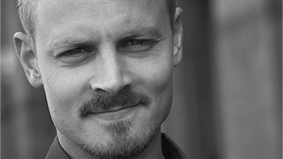Content marketing is not exactly a new thing. Neither is the idea that everyone is a content producer or that we’re all journalists now. But I wonder if we’re still underestimating the huge shift that this brings to marketing in terms of approach, timescales, process and resources.
This presentation from data visualisers Jess3, whilst obviously skewed towards storytelling in social media, makes some good points about this shift and includes a quote from Josh Sternberg about how “brands aren’t set up to be publishers. They don’t necessarily understand the editorial process or have the stomach for the length of time it takes to build an audience.”
One of the real changes in marketing has been the increasing focus on ‘always-on’ channels, and (to use the Paid, Owned and Earned way of looking at the world), on Owned and Earned media rather than just Paid. This CNN piece talks about how Nike’s US spending on TV and print advertising has dropped by 40% in just three years, even as its total marketing budget has increased to a record $2.4 billion. Not every brand is a Nike of-course, but as I’ve said before the interesting places in Paid, Owned and Earned is how they work together and the spaces where they overlap, and this requires different content thinking.
For me, part of the challenge here is around resource. What Red Bull do with content is amazing (they are one of the top five sports content producers on YouTube globally, for example). But the Red Bull Media House employs 400 people worldwide. In the absence of this type of scale, organisations have to get smart about skilling up existing resource and using things like content curation in interesting ways.
Another part of the challenge is about mindset. As Sternberg points out AmEx’s OpenForum took four years to get 1 million people aboard, and now gets about 150,000 unique visitors per month. Without this kind of long-term view and commitment, projects like this just get suffocated or shut down.
And yet another part is around approach. The most interesting part of Coca Cola’s shift toward ‘content excellence’ is the 70,20,10 approach that focuses 70% of output on low risk, bread and butter stuff, 20% on innovating off what works within that, and 10% on newer, high risk ideas. Without this kind of flexibility to budgeting and resourcing, building a proper content plan that is enduring but adaptive is impossible.
The role of agencies in all this is up for grabs. I’d say that the smart ones are already working in ways that take them beyond the kinds of processes and mindsets associated with simple campaigning, and are making themselves an essential part of this process. There are compelling reasons why not just thinking, but also process and practice need to be different.
I was struck, listening to David Hieatt speak at the recent Google Firestarters, how much the Hiut Denim brand and company is being built around a compelling story right from the beginning. Have a read of this inspiring interview in which he talks about some of the themes he touched on at the event (“I believe that your first 1000 customers are your real fans. They can help you get to the dream. They need to know the dream and the plan to get there”). In many ways this has always been the case, but the way in which companies use content to tell their stories, the kind of skills they are building, and the way they are working with their agency partners is fundamentally changing. We can all get excited by the latest social tool or app but this, to me, is where all the exciting stuff is happening right now.
Original Post: http://neilperkin.typepad.com/only_dead_fish/2012/03/brands-as-publishers.html


